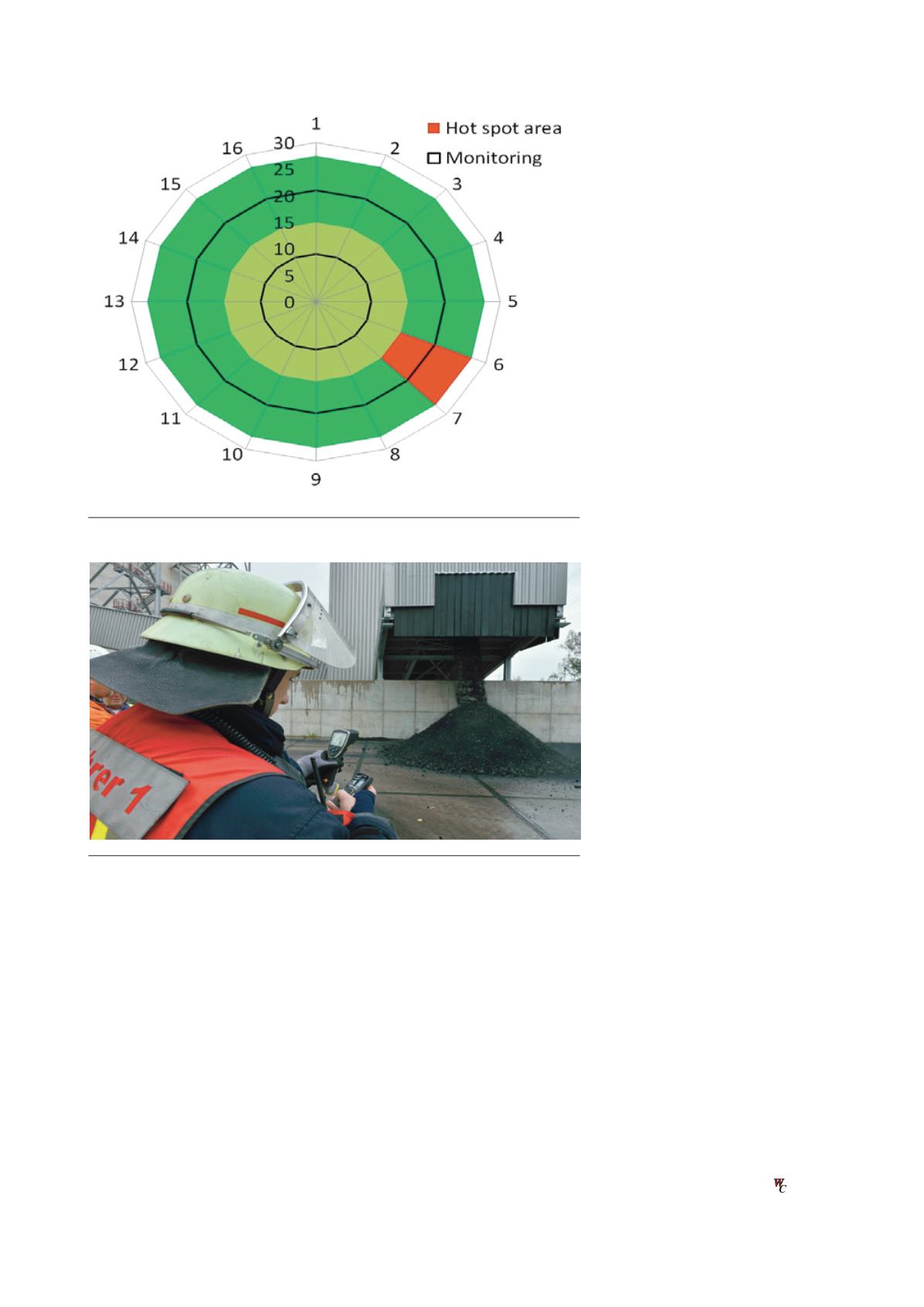
gravel at the bottom of the silo and
covers the whole surface. It is also
connected to the piping in the
reclaiming hoppers. Trucks loaded
with liquid nitrogen, can be
connected to a nitrogen evaporator
outside the silo, enabling purging of
the system with nitrogen. This
system has proven to be very
effective.
Alternatively, the reclaiming
hoppers, being a potential entry
point for air, can also be purged with
nitrogen separately. This can be done
by using bottles, allowing purging of
small amounts in the hopper.
At the upper bridge level, foam
sprayers are present to cover specific
parts of the coal surface with a layer
of foam in case of a self-heating
emergency.
A spraying system is installed
above the heat‑resistant conveyor
belt in the basement of the silo to
cool down heated coal.
In the unusual case where
methane is measured, the ventilation
system (2 pcs 50 000 m
3
/hr
ventilators) is automatically started.
The Eurosilo should then be taken
out of operation and a power
shutdown in this silo should be
organised. Up to this day, this has
never occurred.
Hotspot measurement
Once an increase in CO is measured,
one can use the indicative screen in
the silos to determine where the
hotspot is. For this, a control screen
displays the approximate position.
Then, with a thermal imaging
camera, the position can be defined.
Hotspot treatment
Firesorb
®
is a fire-fighting
device‑additive for the firegrade
class A. The liquid-polymer solution
absorbs a multiple amount of its
own weight in water and forms an
adhesive and heat-shielding gel,
which contains no air bubbles but
consists of evenly thickened water.
With the FireSorb-system,
hotspots can be treated. It is only
used in small quantities and only to
counter the hotspot as it reduces the
calorific value of all coal. It can be
used from the rotating bridge, once
the position has been determined.
Experiences with
hotspots
Since the installation commenced full
operation in July 2012, experience
has been gained with the handling
and storing of coal and how to react
when possible challenges arise.
The biggest gain finding has been
that there is ample time to evaluate
the situation and, if a hotspot occurs,
it is not necessary to contact the local
fire department immediately.
Hotspots can be safely managed and
operation of the system is secure and
safe.
A decision on how to counter it is
made in accordance with an
emergency guidebook. To prevent
further damages, hotspots are
removed from the Eurosilo, either by
hand, by discharge system to
emergency loadout or directly in the
day bunkers.
Conclusion
The operating experience with the
Eurosilo system for storing both coal
and FGD-gypsum are satisfactory
and fulfil the expectations.
Determining the position of the hotspot.
Fire fighters with thermal imaging camera monitoring a hotspot.
54
|
World Coal
|
July 2015


